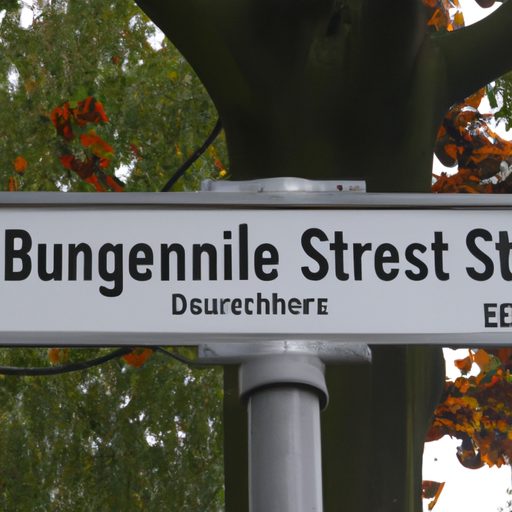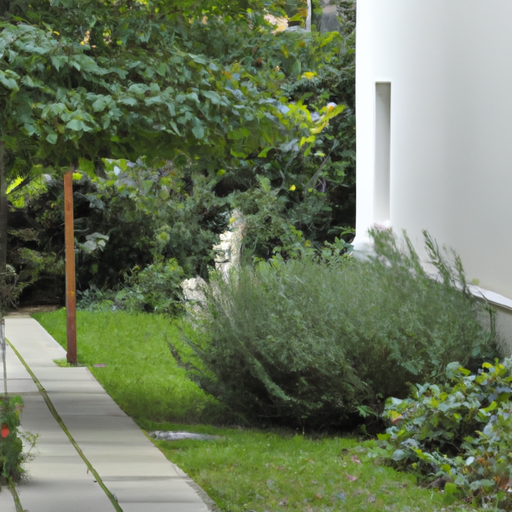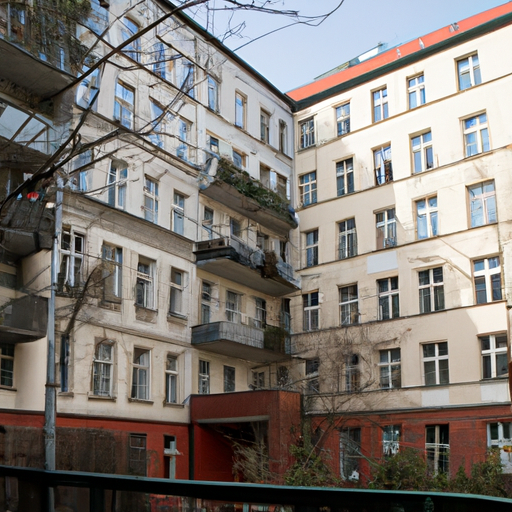Berlin’s Strangest Street Names and Their Origins
Well, strap in, folks, because we’re about to embark on a journey through the wacky, weird, and downright whimsical world of Berlin’s street names. As a local expert, I have the privilege of guiding you through some of the quirkiest roads, avenues, and lanes that pepper this city’s unique landscape. So, grab your favorite artisanal, sustainably-sourced, fair-trade coffee, and let’s dive in.
Let’s start with the mouthful that is “Am Kupfergraben.” This name translates into “At the Copper Ditch.” Now, I know what you’re thinking: “Is there a copper ditch at the end of this road?” Sadly not. However, back in the day, when Berliners had more copper than sense (and that saying something), this street was home to a moat filled with copper-coated nails. Legend has it that they hoped it would deter rats or, perhaps, copper-thieving goblins.
Next up is “Unter den Linden,” which translates to “Under the Linden Trees.” While you might think this is a pretty straightforward name, the story behind it is rather amusing. Back in the 16th century, it was common for nobles to plant linden trees along the street to provide shade for their carriages. This particular street had so many trees that they began to form a tunnel, hence the name. However, the trees were ultimately removed because they attracted far too many singing birds, and the nobles couldn’t get any sleep. Talk about a bird-brained idea!
Moving on, we have “Heinrich Heine Straße.” It’s named after one of Germany’s most famous poets, Heinrich Heine. Now, this might not seem strange until you realize that Heine was a notorious troublemaker. He was banned from Germany for his radical political views and spent the last 25 years of his life in exile in Paris. Naming a street after him is kind of like naming a street after a notorious graffiti artist. It’s a bit rebellious, a bit cheeky, and very Berlin.
Let’s continue our journey with “Schönhauser Allee.” This name translates to “Beautiful House Avenue,” and the story behind it is quite charming. Back in the 19th century, a wealthy widow lived on this street. She had a reputation for being a bit of a recluse, but one day she decided to repaint her house in vibrant colors. The transformation was so stunning that people started referring to the street as “Beautiful House Avenue.” It’s a little reminder that you’re never too old to make a splash.
Now, let’s talk about “Invalidenstraße.” This name translates to “Invalids Street,” and it’s named after a hospital for war veterans that used to exist here. But here’s the fun part: Berliners are known for their dark humor, and they’ve transformed this rather somber name into a local inside joke. You see, “Invalidenstraße” is also a common excuse for being late to a party or a meeting. “Sorry, I was stuck on Invalidenstraße” is a euphemism for “I was too lazy to leave my house.”
Next on our list is “Torstraße,” which translates to “Gate Street.” This street is named after the city gate that once stood here. But the real kicker is this: the gate was demolished over a century ago, and no one really remembers what it looked like. It’s a bit like naming a street after a unicorn or a mermaid. It’s all based on imagination and speculation, which I think perfectly captures the spirit of Berlin.
Speaking of imagination, let’s move on to “Karl-Marx-Allee.” This street is, of course, named after the famous philosopher Karl Marx. But here’s the twist: Marx never lived in Berlin, and he had a rather complicated relationship with the city. He once referred to Berlin as a “city of parvenus,” which is basically the 19th-century equivalent of calling it a “hipster paradise.” So, the fact that there’s a street named after him is a bit like naming a vegan café after a famous butcher. It’s ironic, it’s funny, and it’s very Berlin.
To wrap up our journey, let’s talk about “Zossener Straße.” This street is named after the town of Zossen, which is located about 30 kilometers south of Berlin. But here’s the fun part: Zossen is known for its annual “Potato Festival,” which is exactly what it sounds like – a festival dedicated to potatoes. So, in essence, Zossener Straße is named after a town that’s famous for its love of potatoes. I mean, if that’s not peak Berlin, I don’t know what is.
And there you have it, folks – a whirlwind tour of some of Berlin’s strangest street names and their amusing origins. But remember, this is just the tip of the iceberg. Berlin is a city that’s constantly changing, evolving, and reinventing itself, so who knows what new street names we’ll see in the future. Perhaps one day we’ll have streets named after kebabs, techno DJs, or even artisanal coffee shops. But until then, we’ll just have to keep exploring, laughing, and enjoying the ride.
Helpful Q&A:
Q: What is the story behind the name of Unter den Linden street in Berlin?
A: Ah, Unter den Linden! It’s one of Berlin’s most famous boulevards, and its name literally translates to “Under the Linden Trees”. Now, let me paint a picture for you. Imagine, if you will, a time when Berlin was just a small town in the 16th century. The street was initially a bridle path leading from the city palace to the hunting grounds of the Elector of Brandenburg. Over time, it was expanded and lined with Linden trees, providing a beautiful, shaded walkway. It’s a sight to behold in summer when the trees are in full bloom. So, the street got its name from these Linden trees that have been a prominent feature of the boulevard for centuries.
Q: Can you explain the origin of the Friedrichstraße street name?
A: Absolutely! Friedrichstraße, another famous Berlin street, owes its name to King Friedrich I of Prussia. The street was laid out in the late 17th century during a period of urban expansion and it was named in honour of the King. Friedrichstraße has quite a significant history attached to it. It was a major cultural hub during the Weimar Republic, filled with cafes, bars, and the Wintergarten theatre. But, its character changed drastically with the construction of the Berlin Wall in 1961, as it was cut in two by the border. Today, it’s a bustling shopping street and home to the iconic Checkpoint Charlie.
Q: What’s the background behind the Schönhauser Allee street name?
A: Schönhauser Allee, my friend, is one of the main streets in the Prenzlauer Berg district. The name “Schönhauser” is derived from a manor house that once stood there, called “Schönhausen”, owned by the nobleman Peter Schön. The “Allee” part of the name, which means avenue, refers to the rows of trees that once lined this road. This street saw a rapid development during the 19th century with the industrialization boom, and it was a working-class neighborhood during the GDR era. Nowadays, it’s a vibrant area with numerous shops, restaurants, and the famous Mauerpark.
Q: How did the street name Kurfürstendamm come about?
A: Ah, Kurfürstendamm! It’s one of the most well-known avenues in Berlin, often likened to the Champs-Élysées in Paris. Its name comes from the term “Kurfürst,” which means “Prince-Elector,” the princes who were entitled to elect the emperor in the Holy Roman Empire. The “damm” part refers to a causeway or a raised road. The avenue was originally a pathway for the Elector Joachim II, who used it to travel from his city palace to his hunting lodge in the Grunewald forest. Over the years, the path was expanded and eventually became the grand boulevard we know today, lined with shops, cafes, and luxury boutiques.
Q: What’s the story of the name Potsdamer Platz?
A: Potsdamer Platz is a significant public square and traffic intersection in Berlin with an interesting history. Its name comes from the city of Potsdam, located to the southwest of Berlin. Back in the day, around the 17th century, it was the place where the old road to Potsdam passed through the city wall. It was just a minor gate back then. But with time and the growth of Berlin, this gate became a bustling intersection. During the 1920s and 30s, it was one of the busiest traffic centers in Europe. Sadly, it was left in ruins after World War II and then cut in half by the Berlin Wall. But after the Wall fell in 1989, it was extensively reconstructed and is now a modern plaza filled with high-rise buildings, shops, and restaurants.


